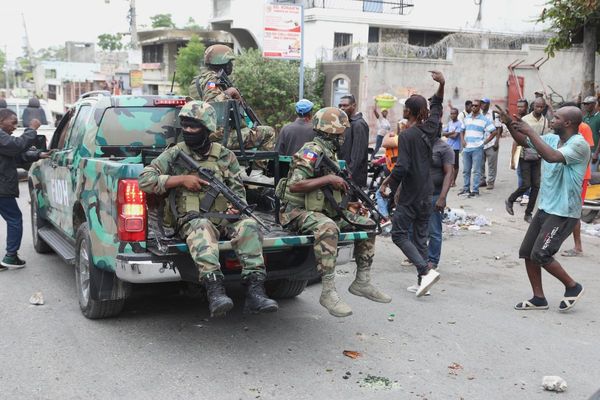Pope Francis, who is recovering from a severe bout of pneumonia, marked Easter Sunday by blessing thousands of people who had gathered for mass in St Peter’s Square and then embarking on a surprise popemobile tour around the piazza.
The 88-year-old pontiff, who nearly died during his recent five-week stay at Rome’s Gemelli hospital, did not celebrate mass in the square, delegating the service instead to Cardinal Angelo Comastri, the retired archpriest of St Peter’s Basilica.
When mass ended, Francis appeared on the loggia balcony over the basilica entrance, prompting huge cheers.
“Brothers and sisters, happy Easter!” he said, his voice sounding stronger than it has for weeks. The crowd, which responded with chants of “Viva il Papa!” or Long live the Pope! and “Bravo!”, was delighted when Francis looped through the square in his open-topped popemobile and then up and down the main avenue leading to it. He stopped occasionally to bless babies brought up to him, a scene that was common in the past but unthinkable just a few weeks ago when he was fighting for his life.
“It is excellent, a miracle,” said Margarita Torres Hernández, a pilgrim from Mexico who was in the square. “Now that he has come out, for me it’s a miracle, it’s something very big, very beautiful.”
Marcin Popowsky, a pilgrim from Poland, said he had been very touched to see the pope: “We’re very happy that we can see a pope in good shape,” he said.
Francis has made only a handful of public appearances after leaving hospital and returning to the Vatican on 23 March. He skipped the solemn services of Good Friday and Holy Saturday, but had been expected to make an appearance on Sunday to celebrate the most important day in the Christian calendar.
In accordance with his doctors’ orders for two months of convalescence and respiratory therapy to improve his lung function, he has cut back his workload.
He did, however, find time on Sunday to meet the US vice-president, JD Vance, who had had “an exchange of opinions” with the Vatican’s secretary of state over international conflicts and immigration when they met a day earlier. Vance and Francis have previously disagreed very publicly over the Trump administration’s attitudes to migrants and migration.
According to a short statement from the Vatican, Vance met Francis at his residence for a few moments on Sunday morning “to exchange Easter greetings”.
In the traditional Urbi et Orbi message, which was read out on his behalf, Francis reminded Roman Catholics that Easter was a day of joyful resurrection but lamented the “contempt … stirred up at times towards the vulnerable, the marginalised, and migrants”.
He also stressed the importance of using Easter to “revive our trust in others, including those who are different than ourselves, or who come from distant lands, bringing unfamiliar customs, ways of life and ideas. For all of us are children of God”.
He went on to remind people of the suffering in Palestine, Israel, Ukraine, Sudan, South Sudan, the Democratic Republic of the Congo and Myanmar, among many other places.
“I appeal to all those in positions of political responsibility in our world not to yield to the logic of fear, which only leads to isolation from others, but rather to use the resources available to help the needy, to fight hunger and to encourage initiatives that promote development,” he said. “These are the ‘weapons’ of peace, weapons that build the future instead of sowing seeds of death.”
The team of doctors who treated the pope for pneumonia revealed last month that he had come so close to death that they had to choose whether “to let him go, or push forward”.
Francis suffered four breathing crises during his stay in hospital, the most critical episode being on 28 February, when he inhaled his vomit.
“We were all aware that the situation had further worsened and there was a risk that he would not make it,” Sergio Alfieri, a general surgeon at Gemelli hospital, said in an interview with Corriere della Sera published at the end of March.
“We had to choose whether to stop and let him go, or push forward and try with all the drugs and therapies possible, running the very high risk of damaging other organs. In the end, we took this path.”
The Associated Press contributed to this report







